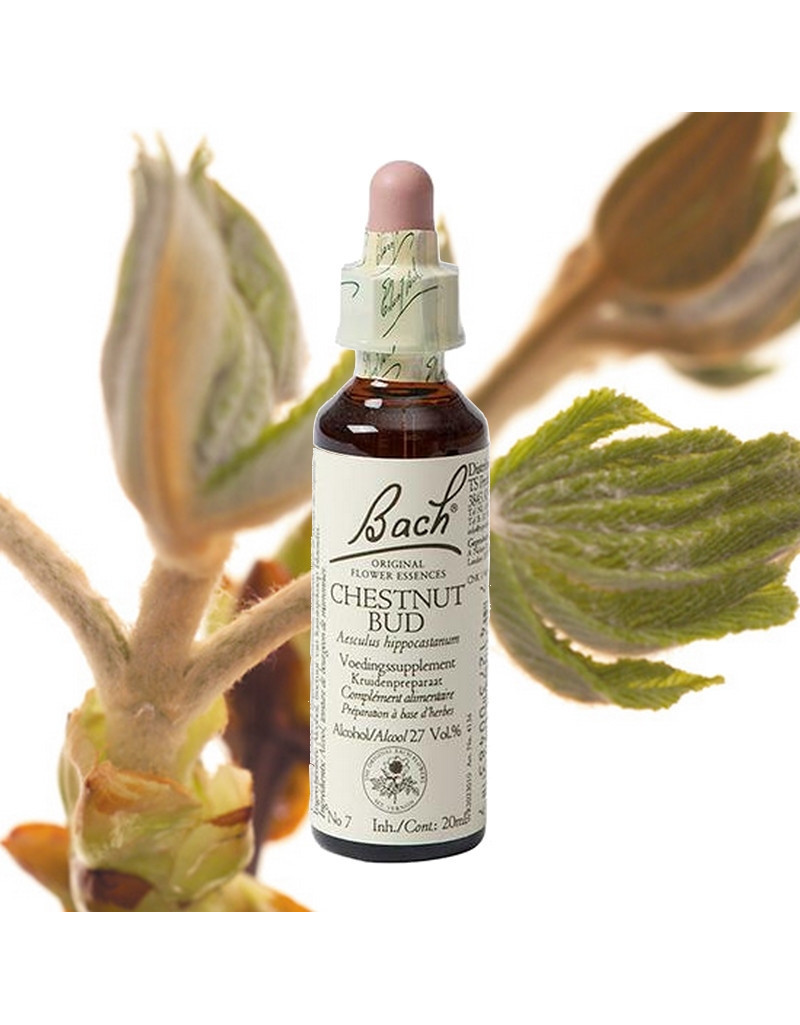

What is a floral elixir according to Dr. Bach?
Dr. Edward Bach (1886-1936) assumed that certain negative emotional states can have a detrimental effect on our bodily well-being. Thus, rather than directly relieving a physical dysfunction, he advocated the restoration of a psychological balance based on the use of 38 different flowers with harmonizing and positive strength.
This method does not claim to be the solution to all the physical or moral inconveniences that can be encountered but it can play a significant supporting role in case of emotional imbalance.
Overview
This flower is suitable for those who do not manage to take into account experiences lived to carry out their daily life: they always fall into the same mistakes. They are the first to be surprised when a little attention is needed to learn to act properly on certain occasions, including observing and remembering how to behave in similar situations. This attitude, which could be defined as distracted and / or negligent, comes from the fact that these people are not interested in what belongs to the present. That is why they learn nothing from the daily experience or the experience of others. The chestnut bud has the power to restore a more vigilant behavior in those who lack attention and memorization and memory or who are pressed and superficial.
The signage of the chestnut bud is similar to that of a person unable to tune his inner world with the concrete reality of his existence. This big and big tree, which disappoints a little by its fruits, is full of good intentions and has several very appreciable qualities. Its fruits, which resemble chestnuts (Castanea sativa), are not edible, but are used in therapy for their pharmacological substances (tannins, glucosides, vasoconstrictors, analgesics). The bud, the bud is the best part of the plant. It contains the flower and the leaf, the potential energy to learn, remember, repeat, using the experience to the best of its ability. The spring bloom of the white flower, spotted with red or yellow, offers us a marvelous spectacle of beneficial strength. It destroys mental laziness, the distraction of being squeezed and superficial, as well as excessive carelessness. Red-white is a sign of transformation, the beginning of a new life. We look in a lively and joyful way at the present concrete reality, which can not be neglected or ignored, because it contains in it all the contrasting aspects of existence. The yellow-white color tones the mental intuition which is transformed into a concrete movement with various potentialities. It inspires optimism, positive magnetism, extroversion directed towards positive and generous goals, and eliminates its opposite characteristics such as pride, pessimism, introversion, obsessive jealousy, betrayal.
Negative moods
- General difficulties of attention, observation, memorization and especially towards everything that concerns the daily environment.
- Fall back into the same mistakes without having the conviction to be wrong every time.
- Being impulsive, caring at random, doing a quick job, being superficial.
- Work in a jiffy or with a mind elsewhere, with a feeling of being foreign to what one does.
- Endless sensory erraticism, agitation, abnormally reflexive reactivity.
- Great wealth of proposals threatened with dispersion and fantasy.
Psychological therapeutic indications
- Superficial mind, distraction, lack of attention (not serious).
- Schizoid personality disorder accompanied by coldness and emotional indifference, lack of warm and tender feelings towards other people.
- Indifference to compliments, criticism or feelings of others (serious).
- Autism, rupture of mine with reality; inability to develop interpersonal relationships (serious-very serious).
In children
- Collect school failures because of learning difficulties.
- Being distracted by the game. Indifference, unable to observe, carelessness.
- Speak instead of listening or be easily distracted while listening.
- Always forget the same things, make the same mistakes in homework.
- Pretend to be attentive but not interested in teaching.
- Being disoriented internally from an emotional and / or mental point of view
- Born prematurely; present a retardation of psychophysical mental development.
- Infantile autism (lack of response to other people).
Psycho-organic therapeutic indications
- Tendency to fall back into the same diseases through disinterest or apathy.
- Tendency to neglect his troubles by not knowing how to remedy them.
- Transition from acute or over-acute illness to chronic disease, through negligence.
- Myopia, loss of sight and hearing in those who are reluctant to see and listen to the truth when given the opportunity.
- Headache, neuralgia, tic disorder, sobs (facing the same person)
- Motor disorders and coordination problems in a mentally unstable, distracted person.
- To try to find the word after an ictus (immediate administration)
- Gastralgia, heartburn, dyspepsia in those who continue to eat the same thing.
- Neodenal ulcer neglected.
- Difficulty of sphincter control, tenesmus, incontinence.
Characteristics of healing
- The consciousness of reality is reborn by exploiting the experience gained through the careful and thoughtful observation of the behavior of others, actively imitated.
- Refusal to remain inactive and to wait for the help of others whenever one fails to finish his work.
Manual
2 drops under the tongue, or diluted in water, 4 times a day, including in the morning on an empty stomach and at bedtime.
Composition
Grape alcohol 27% v/v, aqueous solution of leaf buds and twigs of Aesculus hippocastanum L. (dilution 1/500).
Precautions for use
Do not exceed the recommended dose.